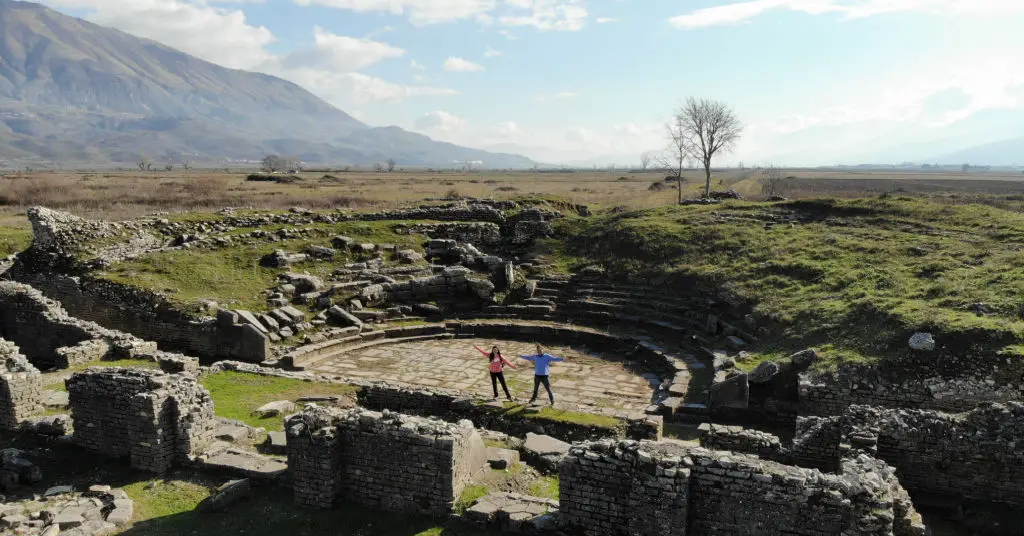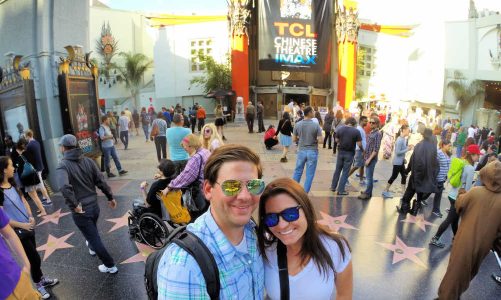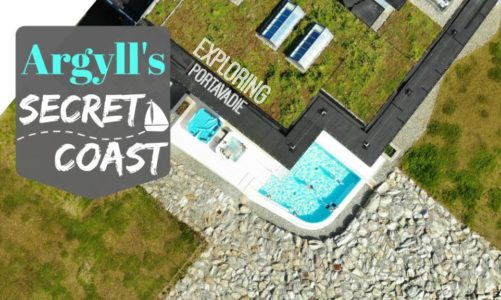The ancient city of Hadrianoplis in Gjirokaster, Albania is one of the country’s least-visited but most impressive attractions. A tour of the ruins should be included in the itinerary of every first-time visitor to Albania. For most guests, the highlight of their visit includes touring the ancient Roman theatre—guests may sit in the stands and walk through the staging areas of the ancient theatre.
Hadrian Was Here
Between building stone walls in Northern England, the Roman emperor Hadrian was often seen enjoying the theatre on warm summer nights. Hadrian visited the area around Gjirokaster in AD 125. In fact, there’s a good chance that Hadrian himself sat and watched a play in this very theater, located in the Roman province of Illyricum.
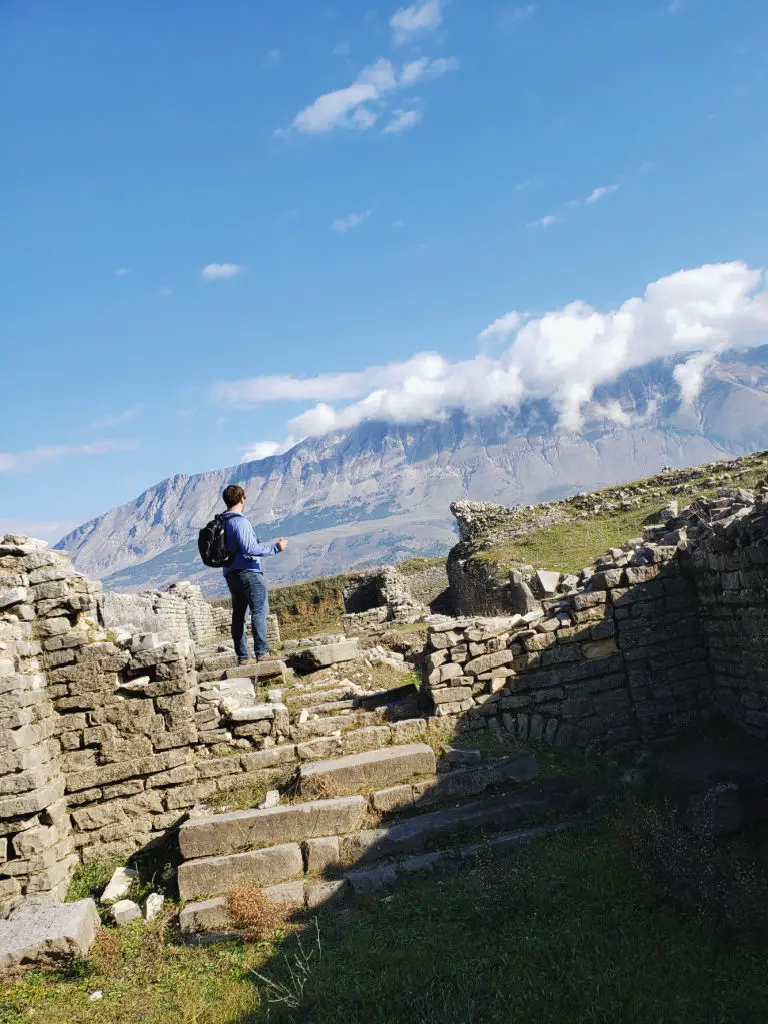
During the Hellenistic period (323 to 31 BC), Hadrianopolis (Hadrianoupolis) lied within the ancient region of Epirus and was originally inhabited by the Chaonian tribe, which is why today, it’s referred to as Hadrianopolis in Epirus. Three other nearby Choanian cities include Finiq (Phoinike), Antigonea (Antigoneia), and Butrint (Buthrotos)—we challenge you to visit all four!
Who Was Hadrian?
Hadrian Publius Aelius Hadrianus was born on January 24 in 76 A.D., in Italica, Hispania in modern-day Seville, Spain. Emperor Hadrian came to power in 117 A.D. and held the title until 138 A.D. Unlike previous Roman emperors, who were looking to constantly expand the empire, Hadrian sought to protect the land that the Romans had already acquired.
Looking to protect the territory, Hadrian built walls on the boundaries of the empire. As a result of this pursuit, his name became immortalized in time for the barrier constructed in northern Britain, now known as Hadrian’s Wall.
Ancient Roman Cities in Southern Albania
Around Albania, many Hellenized villages eventually turned into Roman cities and today serve as popular tourist attractions. Butrint is the most visited because it’s a UNESCO World Heritage Site.
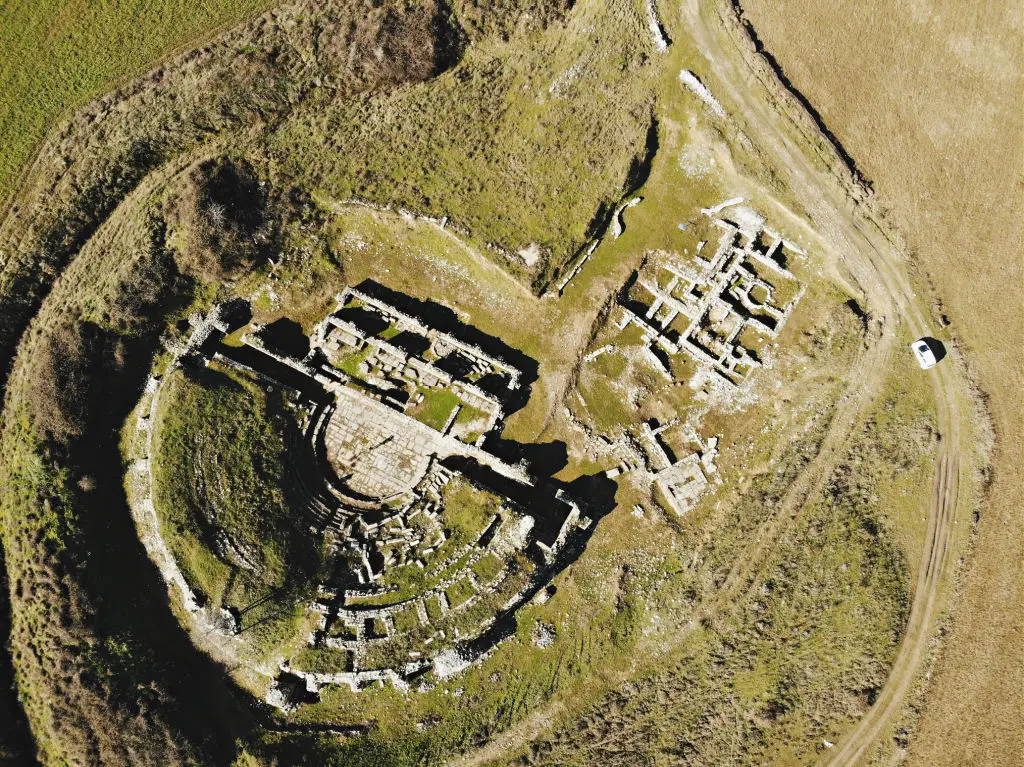
Among the locations, Finiq and Hadrianopolis are the least visited. Many times, when stopping over in Gjirokaster, travelers will tour Antigonea and skip Hadrianopolis. While Antigonea covers a much larger area and provides spectacular views, it doesn’t have the wow factor, of Hadrianopolis, at least in regards to the ruins. The ancient city of Apollonia is located in Fier.
Short History of Hadrianopolis
Beginning in the 2nd century BC, Antigonea was gradually abandoned and eventually burnt to the ground by the Romans. In brief, Antigonea was founded by either the King Antigonos Gonatas of Macedonia or, more likely, the Molossian King Pyrrhus around 300 BC.
The Molossian tribe allied with the Macedonians while the Chaonians unified with the Romans. Consequently, when the Romans took over the territory, the Chaonians were spared and the Molossians were destroyed.
The city’s remaining inhabitants progressively moved from Antigonea, high on a hill, to Hadrianopolis, positioned on the site of an earlier Hellenistic settlement in the agricultural valley below. As a result, Hadrianopolis became the new urban ruling center for the Roman territory.
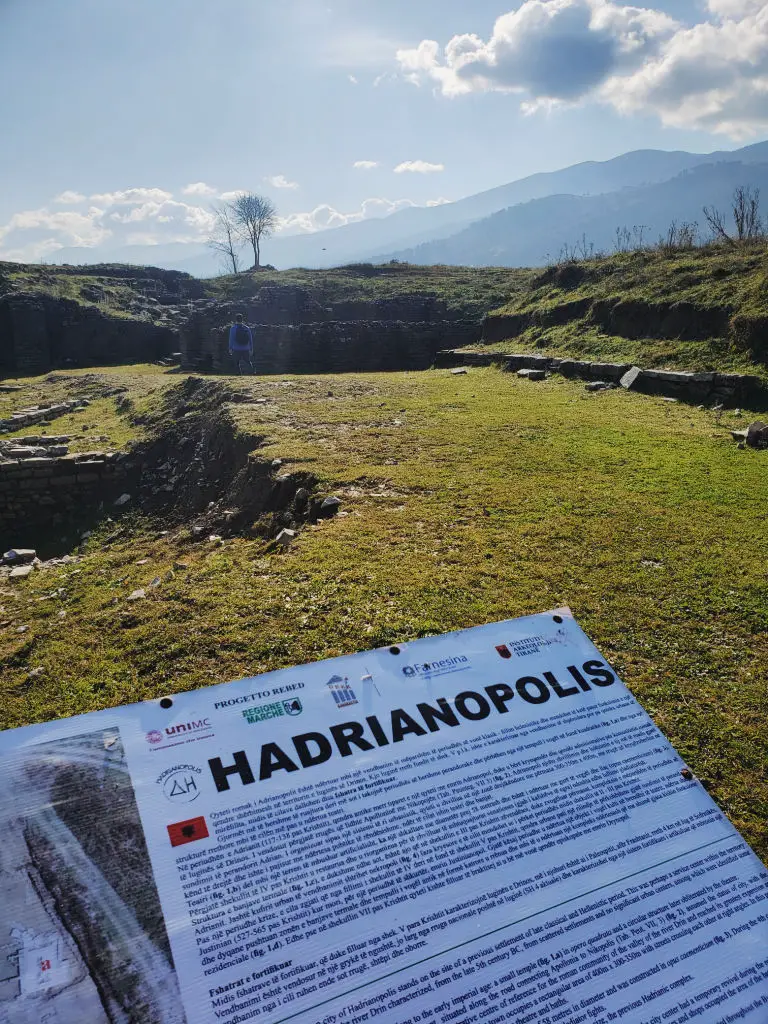
Emperor Hadrian chose the location for Hadrianopolis because of its continued growth over the centuries and because it’s a midway point between Apollonia and Nicopolis. Hadrianopolis was continuously inhabited until the 5th century AD. In the 6th century AD, Hadrianopolis was re-founded by the Byzantine emperor Justinian I.
Hadrianopolis enjoyed continuous habitation until at least the end of the 5th century AD. During the 6th century AD the Byzantine emperor Justinian I fortified several outposts throughout the region and is known to have re-founded Hadrianopolis as Justinianopolis.
Hadrianopolois occupied an area of about 16 hectares and followed the typical Roman grid pattern. In the 1970s, the ancient city was uncovered by a landslide. It was not until 1984 that local farmers noticed the upper part of the theater.
Visiting Hadrianopolis Today
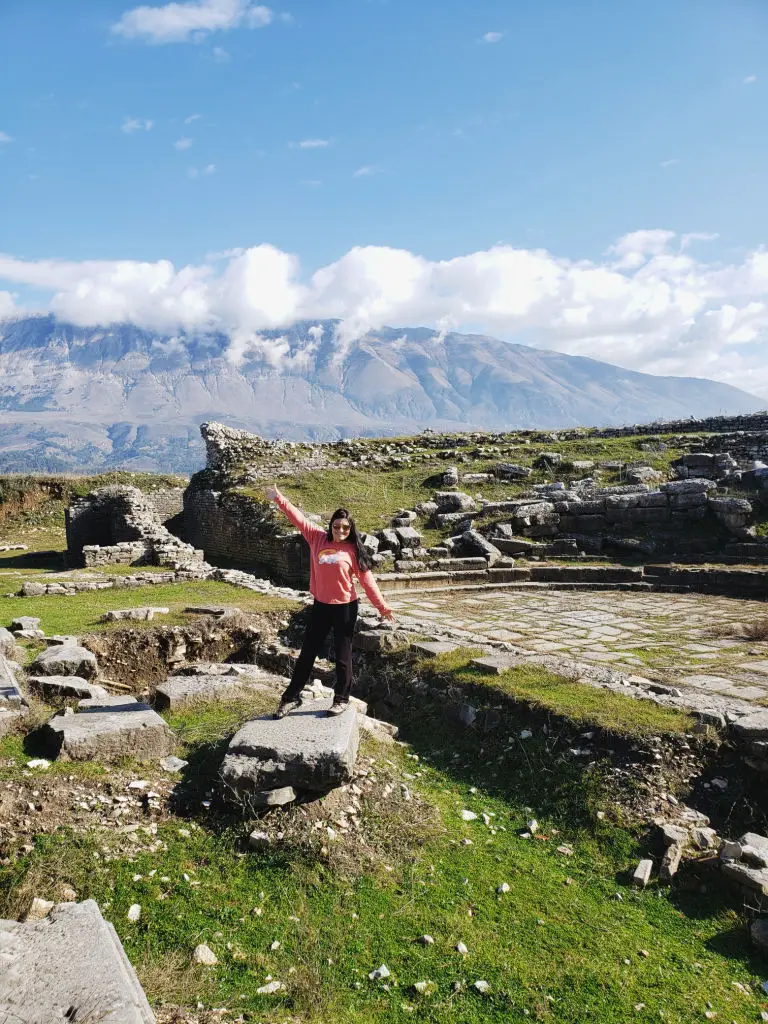
Excavations have only recently begun and are moving along slowly but surely. As a result, the only archaeological remains that have been excavated to date are the Roman theatre and baths.
Back in the day, the theatre was a massive structure. With only about 10 rows barely visible today, it’s a bit hard to imagine how impressive this building must have once been. The theatre is estimated to have had 27 rows, and held about 4,000 people!
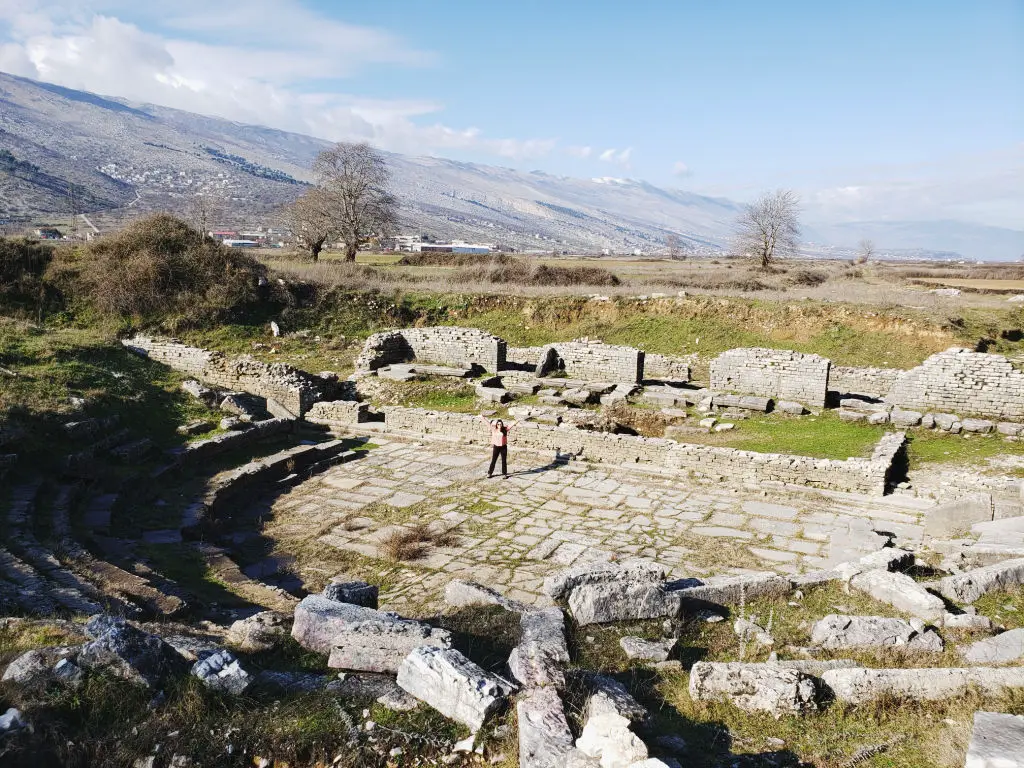
This is why we love traveling through the Balkans. You can visit an ancient Roman theatre, let your imagination run wild, have it all to yourself to enjoy, and tour it in its raw state (for free!).
Planning Your Trip to Hadrianopolis
Hadrianopolis is located about 15 minutes or 8 miles south of Gjirokaster. The last mile is on a bumpy dirt road. We drove a small compact vehicle right up to the location. However, due to the rough terrain, drivers should drive slowly.
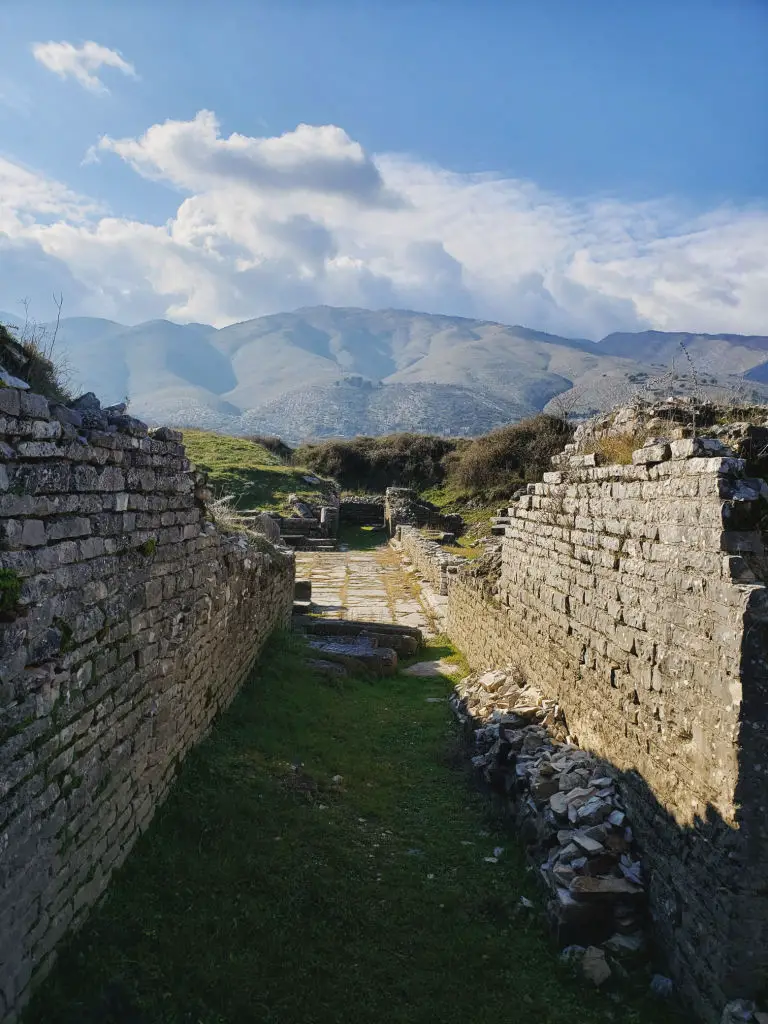
From the main road, drivers will have to navigate under an overpass. Therefore, large vehicles, such as RVs may not be able to reach the site. There is plenty of parking options near the overpass, allowing visitors to make the 1/2 mile walk to Hadrianopolis.
The excavated area is quite small so many people may spend no more than 15 minutes visiting the site. Also, the area is not fenced in and no hours are limiting when it may be visited. Therefore, we would recommend that you embrace the wonderful atmosphere and take your time.
Update: We came across this interesting photo of Hadrianopolis after writing the post and thought it was interesting enough to include in the post.
We Need Your Help
Did you find this article helpful? If so, bookmark it and when you’re planning your next vacation, click on any of the links below before finalizing reservations. You’ll get the best price, we’ll earn a small commission, and you’ll help support future articles.
Thank you!
BEST TRAVEL SEARCH ENGINES
🏘️ Book Accommodation
We use Tripadvisor to compare prices and reviews in advance and check availability
✈️ Book Your Flight
To find the cheapest flight options, use Skyscanner to find the most suitable choice for you
🚗 Reserve Rental Car
Use Discover Cars to compare prices and view the largest selection of vehicles

